App development is not only good branding. It is also a great tool for communication between company and customer and much more enjoyable for both. Apps extend an expanse to portable and mobile gadgets’ ability to provide seamless expansion of the scope with which companies can serve to consumers online. The most important thing in an app is the appearance. Interface of the application should be attractive and comfortable in use. Moreover, it should have a unique identity, which reflects the company’s branding message and helps to establish emotional connection with customers.

However, the team of developers can provide different services within these types. Not only create a web app/site, but optimize your existing one, or help with regular maintenance. Let’s simply go through these services.
If you’re looking to create a complex and unique mobile app, an app development approach will be your best choice. We build iOS and Android native apps considering all your business requirements and taking care of all platform-specific nuances.
Android web developer (AWD) as an IDE: guide to the Android IDE list

Most smartphone users opt for Android. It’s easy to use, most apps are made for it, and people can choose a phone brand they want. That is why most developers perceive Android as the best operating system.
The most common activities of writing software are editing source code, building executables, and debugging. An IDE (Integrated Development Environment) is an application suite where you can do all of those activities in one place. Which is great for Android mobile app development.
Let’s talk about the best Android IDEs for developers, so you can choose your variant:
– AIDE. Is an android IDE that is the application itself. It allows you to develop real Android apps directly on your device. The free version provides almost all main features, and the ability to develop apps is at the palm of your hand and focuse only on code. The premium feature allows you to create user interfaces right inside the IDE.
– DroidScript. It doesn’t require an internet connection to be used, and it doesn’t use the cloud. You can easily connect your device to a web browser on Windows, Mac, or Linux PC.
– CppDroid. This IDE is focused on C/C++ programming. It features examples and tutorials for beginners. Also, it features real-time diagnostics and fixes and allows you to work offline.
– Android Web Developer (AWD). It’s probably the most massive IDE when considering the number of features. All major web languages and formats are supported, and you can access your files from anywhere using FTP, FTPS, SFTP WebDAV. It supports PHP, CSS, JS, HTML, and JSON.
– Python Suite. Pydroid 3 Android IDE features advanced libraries and prebuilt packages. Some of them are PyQt5, cython, matplotlib, numpy, scipy, pandas, etc. Also, there is a full-featured Terminal Emulator with readline support.
– Java Suite. A Java IDE is needed so developers can work for Android app development. All of them feature step by step tutorials for beginners and are powerful enough for the most advanced users.
– Visual Studio. There are tools for swift coding and the ability to test different functions. You can perform bug fixes so quickly and boost app speed. It’s the most efficient IDE.
– Unreal Engine. When it comes to game development, the Unreal Engine (UE) is the best solution for complex high-level games.
– Android Studio. It’s mostly known for its ability to accelerate the development process while not losing any quality.
– PhoneGap. It’s worth noting that it’s an open-sourced IDE with fast debugging and cycle building.
Android app modules
As your app grows and becomes more complex, so it’s increasingly difficult to manage, build and scale. One way to address this challenge is a software technique called modular programming, or modularization in short.
Modularization is a practice of organizing a codebase into loosely coupled and self contained parts. Each part is a module. Each module is independent and serves a clear purpose. By dividing a problem into smaller and easier to solve subproblems, you reduce the complexity of designing and maintaining a large system.
The key benefits of modularization are:
– Reusability (Modularization enables opportunities for code sharing and building multiple apps from the same foundation. Modules are effectively building blocks. Apps should be a sum of their features where the features are organized as separate modules. The functionality that a certain module provides may or may not be enabled in a particular app. For example, a: feature:news can be a part of the full version flavor and wear app but not part of the demo version flavor).
– Visibility control (Android app modules enable you to easily control what you expose to other parts of your codebase. You can mark everything but your public interface as internal or private to prevent it from being used outside the module).
– Customizable delivery (Play Feature Delivery uses the advanced capabilities of app bundles, allowing you to deliver certain features of your app conditionally or on demand).